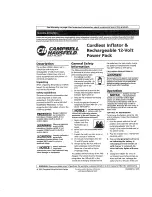
Page 84
EA Elektro-Automatik GmbH
Helmholtzstr. 31-37 • 41747 Viersen
Germany
Fon: +49 2162 / 3785-0
Fax: +49 2162 / 16230
www.elektroautomatik.de
PSB 9000 3U Series
3.11.12.5 Data recording (USB logging)
At the end of the configuration of both, static and dynamic mode, there is the option to enable the USB logging
feature. With an USB stick plugged and formatted as required (see
), the device can record data during the
test run directly to the stick and in the defined interval. Active USB logging is indicated in the display with a small
diskette symbol. After the test has stopped, the recorded data will be available as text file in CSV format.
Log file format:
Static = Selected mode
Iset = Max. current
Pset = Max. power
Rset = Desired resistance
DV = Discharge voltage
DT = Discharge time
DC = Discharge capacity
U/I/Pactual = Actual values
Ah = Consumed battery capacity
Wh = Consumed energy
Regardless the setting for the recording interval, the values “Ah” and “Wh” are only calculated
by the device once per second. When using an interval setting of < 1 s, several identical values
of Ah and Wh are written into the log file.
3.11.12.6 Possible reasons for battery test stop
The battery test function run can be stopped by different reasons:
•
Manual stop on the HMI with button STOP
•
After the max. test time has been reached and action “End of test” was set for it
•
After the max. battery capacity to consume has been reached and action “End of test” was set for it
•
Any device alarm which would also switch off the DC input, like OT
•
Undershooting the threshold U
DV
(discharge voltage), caused by whatever reason
3.11.13 MPP tracking function
This function only works in sink mode.
MPP stands for the maximum power point (see principle view
to the right) on the power curve of solar panels. Solar inverters,
when connected to such panels, constantly track this MPP once
it has been found.
The device imitates this behaviour in sink mode. It can be used
to test even huge solar panels without having to connect a usu-
ally big solar inverter device which also requires to have a load
connected to its AC output. Furthermore, all MPP tracking related
parameters of the load can be adjusted and it’s thus more flexible
than an inverter with its limited DC input range.
For evaluation and analysis purposes, the device can also record
measured data, i. e. DC input values such as actual voltage, cur-
rent or power, to USB stick or provide them for reading via digital
interface.
The MPP tracking function offers
four modes
. Unlike with the
manual handling of other functions, values for the MPP tracking
are only entered by direct input via the touch screen.
MPP
Po
w
er
Voltage











































